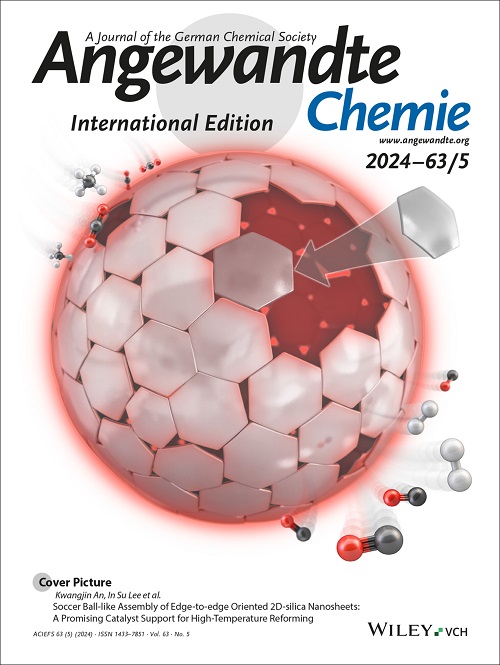Doping Bulky Fluorinated Organic Anion to Construct Highly Efficient Anion-π+ Type Photosensitizers for Cancer Phototheranostics.
IF 16.1
1区 化学
Q1 CHEMISTRY, MULTIDISCIPLINARY
引用次数: 0
Abstract
Anion-π+ type photosensitizers with aggregation-induced emission (AIE) feature have demonstrated promising potential in photodynamic therapy (PDT) against cancer. However, previous reports mainly focused on modifying the π+ core but often overlooked the crucial role of anions. Herein, we present a facile strategy to modulate the fluorescence intensity and cellular uptake of anion-π+ type AIE photosensitizers by doping bulky fluorinated organic anions into nanoparticles (NPs). Anion-π+ type AIE photosensitizer DPBCF-Br with different ratios of bulky anions (TB or FTB) were encapsulated into DSPE-PEG2000 to obtain NPs (named DF-TBX or DF-FTBX, X denotes the molar ratios of TB or FTB to DPBCF-Br). Expectedly, as the doping molar ratios increased, a progressive enhancement in fluorescence intensity of the obtained NPs was observed. This can be ascribed to the steric effect of bulky organic anions and the formation of a hydrophobic environment within the NPs. Interestingly, the optimal cellular uptake was achieved at X=8 in DF-TB8 and DF-FTB8, resulting from the balance between lipophilicity and electronegativity. Ultimately, DF-FTB8 demonstrated outstanding cellular imaging capabilities and high intracellular reactive oxygen species generation, achieving efficient cancer phototheranostics. This facile bulky anion doping strategy will pave a new way for the construction of robust anion-π+ type photosensitizers.掺杂大体积氟化有机阴离子构建高效阴离子-π+型光敏剂用于癌症光疗。
具有聚集诱导发射(AIE)特性的阴离子-π+型光敏剂在癌症光动力治疗(PDT)中具有广阔的应用前景。然而,以往的报道主要集中在修饰π+核,而往往忽略了阴离子的关键作用。在此,我们提出了一种简单的策略,通过在纳米颗粒(NPs)中掺杂大块的氟化有机阴离子来调节阴离子-π+型AIE光敏剂的荧光强度和细胞摄取。将不同体积阴离子(TB或FTB)比例的负离子-π+型AIE光敏剂DPBCF-Br包封在dpe - peg2000中,得到NPs(命名为DF-TBX或DF-FTBX, X为TB或FTB与DPBCF-Br的摩尔比)。正如预期的那样,随着掺杂摩尔比的增加,观察到所获得的NPs的荧光强度逐渐增强。这可以归因于大体积有机阴离子的空间效应和NPs内疏水环境的形成。有趣的是,由于亲脂性和电负性之间的平衡,DF-TB8和DF-FTB8在X=8时达到了最佳的细胞摄取。最终,DF-FTB8表现出出色的细胞成像能力和高细胞内活性氧生成,实现了高效的癌症光疗。这种简单、笨重的阴离子掺杂策略将为构建健壮的阴离子-π+型光敏剂铺平新的道路。
本文章由计算机程序翻译,如有差异,请以英文原文为准。
求助全文
约1分钟内获得全文
求助全文
来源期刊
CiteScore
26.60
自引率
6.60%
发文量
3549
审稿时长
1.5 months
期刊介绍:
Angewandte Chemie, a journal of the German Chemical Society (GDCh), maintains a leading position among scholarly journals in general chemistry with an impressive Impact Factor of 16.6 (2022 Journal Citation Reports, Clarivate, 2023). Published weekly in a reader-friendly format, it features new articles almost every day. Established in 1887, Angewandte Chemie is a prominent chemistry journal, offering a dynamic blend of Review-type articles, Highlights, Communications, and Research Articles on a weekly basis, making it unique in the field.

 求助内容:
求助内容: 应助结果提醒方式:
应助结果提醒方式:


